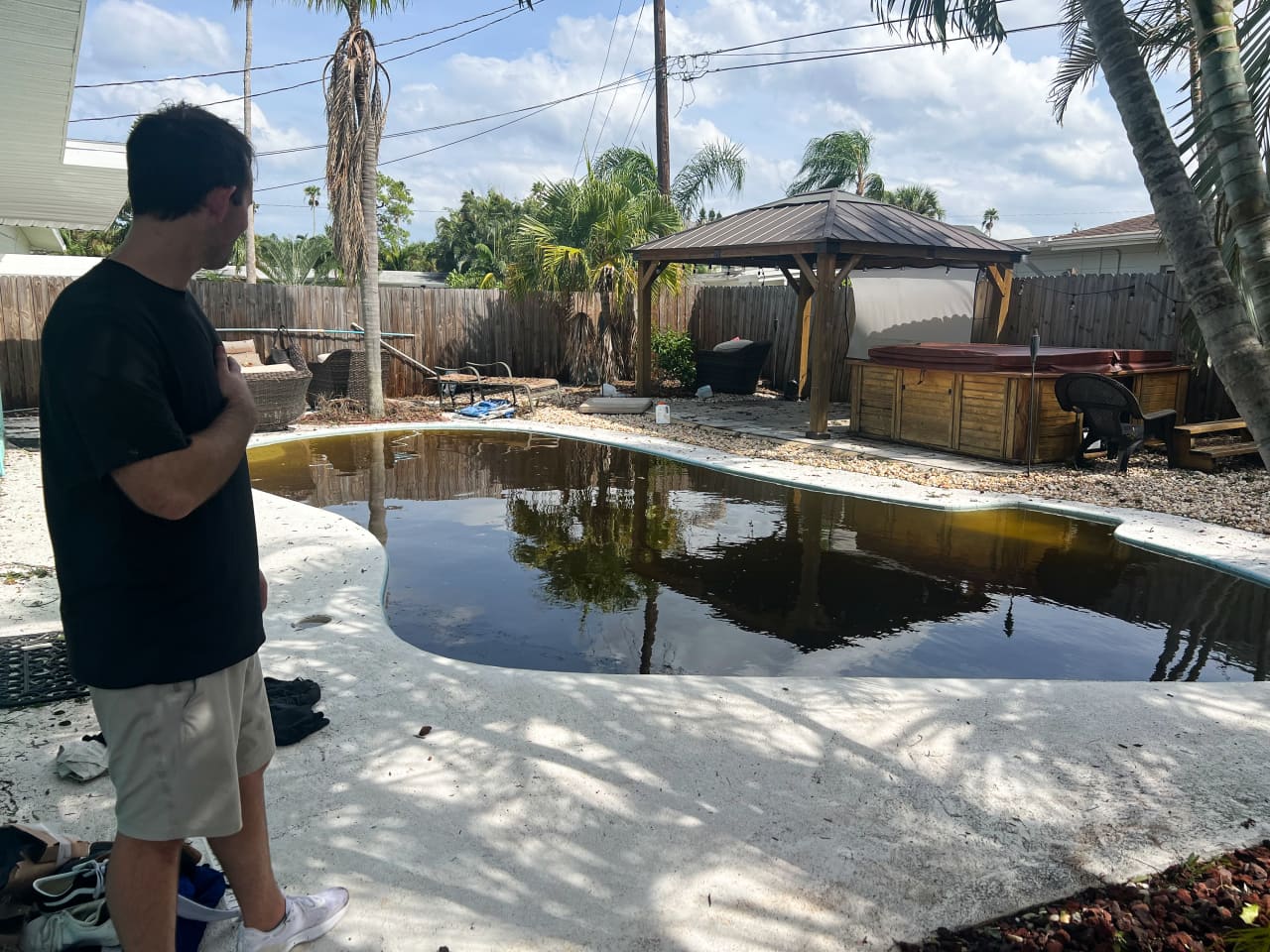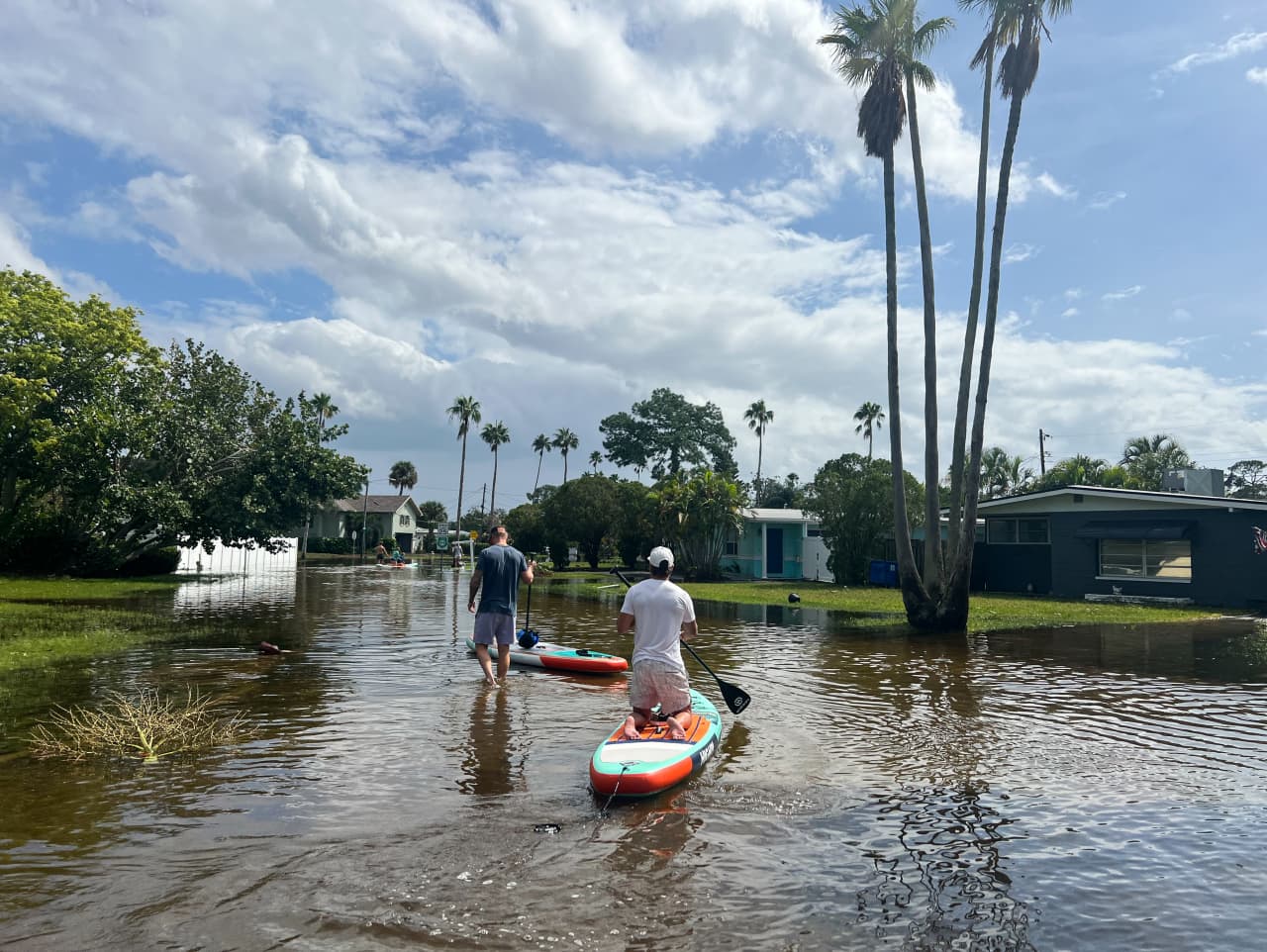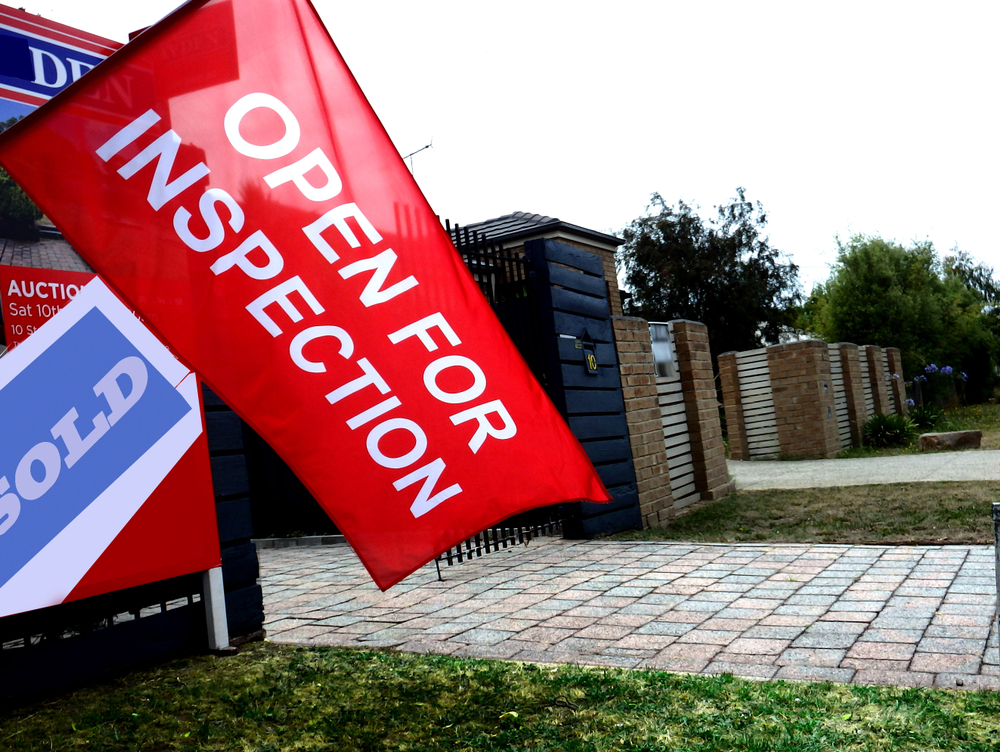In a Florida Town Ravaged by Storms, Homeowners All Want to Sell
Ballooning home insurance costs and the perennial threat of violent storms hit Tampa Bay housing market hard
ST. PETERSBURG, Fla.—Kellen Driscoll bought his home here in 2019, settling in the coastal enclave of Shore Acres. It flooded for the first time four years ago after tropical storm Eta dumped more than 3 feet of water.
Hoping it was a fluke, Driscoll tore out the affected drywall and started fresh. After all, the four-bedroom home built in 1960 had no flood history.
But then it happened again, and again. Like many others in the community, he put his home up for sale in the spring of this year. After seeing little interest, he cut the asking price.
On Friday, Hurricane Helene deposited more than 6 feet of storm surge in the neighbourhood. The rushing waters ripped the “For Sale” sign off his front lawn, and etched a waterline that reached halfway up his front door, just underneath the doorbell. He reduced the asking price for a fifth time.
“We flooded here four times in the last four years,” said Driscoll, as he threw his television sets, furniture, appliances and other belongings to the curb. “I’m just hoping I can sell the house. It’s a good neighbourhood for sure, but dealing with the floods is horrible.”

In the Tampa Bay metropolitan area, which includes St. Petersburg, a real-estate boom nearly doubled median home values from 2018 to June of this year, according to Redfin data. Young people flocked to the region, looking for a coastal lifestyle at a relatively affordable price.
The Tampa Bay metro area was the fifth most popular relocation destination in the country, according to an analysis by Redfin last year. The population has soared to more than three million.
But as Shore Acres’s young residents sorted through the storm’s wreckage, only one thing was on their minds: selling.
Ballooning home insurance costs and the perennial threat of violent storms are starting to undermine housing markets throughout much of the state. But in few places has the turnaround been more dramatic than in low-lying communities up and down the coast of Florida that frequently flood.
The Tampa Bay housing market had been softening even before Helene struck. While prices have been flat, the area experienced a 58% increase in supply in August compared with a year ago, and a 10% decrease in demand, according to Parcl Labs, a real-estate data and analytics firm.
About half the homes listed for sale in Tampa experienced price reductions as of Sept. 9, the third highest share of all U.S. major metropolitan areas.
“Tampa was already heading in this direction before the hurricane hit,” said Jason Lewris, co-founder of Parcl Labs. “This hurricane may compound the market dynamics that have been occurring there over the last few months.”
While Tampa escaped a direct hit from the eye of the hurricane, it was the worst storm to hit the area in a century. The hurricane also plowed into landlocked towns well north, causing heavy damage in the Carolinas where people were just beginning to absorb the scope of ruin.
‘Let’s roll the dice’
Bradley Tennant’s home flooded last year. But to avoid all the competition, he was waiting a year to put it up for sale.
“We saw the glut of homes for sale in the spring and thought, ‘What are the chances it’ll hit again the next year?’” said Tennant, as he cleared out the soaked contents of his waterfront home. “We went 50 years without a storm that flooded the house. So we thought, let’s roll the dice.”
While he paid around $350,000 for the house about seven years ago, Tennant says he received offers as high as $800,000 during the height of the market—before last year’s storm hit. Now he’s hoping to sell as soon as he’s able to renovate.
The area’s affordability, once a large part of its appeal, is also waning as insurance premiums soar. Jacob McFadden was paying $880 a year to insure his home when he bought it in 2020. That amount has since almost quadrupled, to $3,300.
Premiums will likely increase again now. Property damage from last week’s Category 4 storm could be as high as $26 billion, according to estimates from Moody’s Analytics.
“I don’t know how much longer I’m going to do this waterfront living,” McFadden said, standing in front of his home with a wheelbarrow and his home’s contents scattered around the front yard. “This may be the end.”
Dustin Pentz bought his home 10 years ago, and was one of the lucky few to avoid flooding. That is until Hurricane Helene. When police blocked his car from entering the neighbourhood, he paddleboarded his way home to assess the damage.
His fridge was knocked over, and the water reached up as high as his mattress. Unfortunately, his flood insurance doesn’t cover the contents of his home. A tree in his backyard fell over and hit the corner of his roof, but he was unsure that the damage would hit his $8,500 wind deductible.
“This neighbourhood’s amazing, great schools. But no one wants to deal with this all the time,” said Pentz. “It sucks because no one wants to live here anymore. There are so many houses for sale and no one’s buying.”
Working class squeezed
Down the street, Domonique Tomlinson and her husband, Leon Tomlinson, filed a claim for items they lost in last year’s flood. They didn’t want to go through the headache of filing another claim for the contents of their home this year, with a separate $5,000 deductible.
Two days before Hurricane Helene hit, they rented a moving van to haul many of their belongings to a storage unit. She bought her home four years ago for around $199,000. Because property values have increased so much in her area, she hopes to break even. But now she says she’s not so sure.
Tomlinson, who is a teacher, and her husband, who works as a manager at a grocery store, worry that people like them will be priced out of the area because they can’t afford the preventive measures and insurance.
“Basically the only people that are going to be able to live back here are rich people who can build up,” she said.
 Copyright 2020, Dow Jones & Company, Inc. All Rights Reserved Worldwide. LEARN MORE
Copyright 2020, Dow Jones & Company, Inc. All Rights Reserved Worldwide. LEARN MORE
A divide has opened in the tech job market between those with artificial-intelligence skills and everyone else.
A 30-metre masterpiece unveiled in Monaco brings Lamborghini’s supercar drama to the high seas, powered by 7,600 horsepower and unmistakable Italian design.
Buyer demand, seller confidence and the First Home Guarantee Scheme are setting up a frantic spring, with activity likely to run through Christmas.
The spring property market is shaping up as the most active in recent memory, according to property experts Two Red Shoes.
Mortgage brokers Rebecca Jarrett-Dalton and Brett Sutton point to a potent mix of pent-up buyer demand, robust seller confidence and the First Home Guarantee Scheme as catalysts for a sustained run.
“We’re seeing an unprecedented level of activity, with high auction numbers already a clear indicator of the market’s trajectory,” said Sutton. “Last week, Sydney saw its second-highest number of auctions for the year. This kind of volume, even before the new First Home Guarantee Scheme (FHGS) changes take effect, signals a powerful market run.”
Rebecca Jarrett-Dalton added a note of caution. “While inquiries are at an all-time high, the big question is whether we will have enough stock to meet this demand. The market is incredibly hot, and this could lead to a highly competitive environment for buyers, with many homes selling for hundreds of thousands above their reserve.”
“With listings not keeping pace with buyer demand, buyers are needing to compromise faster and bid harder.”
Two Red Shoes identifies several spring trends. The First Home Guarantee Scheme is expected to unlock a wave of first-time buyers by enabling eligible purchasers to enter with deposits as low as 5 per cent. The firm notes this supports entry and reduces rent leakage, but it is a demand-side fix that risks pushing prices higher around the relevant caps.
Buyer behaviour is shifting toward flexibility. With competition intense, purchasers are prioritising what they can afford over ideal suburb or land size. Two Red Shoes expects the common first-home target price to rise to between $1 and $1.2 million over the next six months.
Affordable corridors are drawing attention. The team highlights Hawkesbury, Claremont Meadows and growth areas such as Austral, with Glenbrook in the Lower Blue Mountains posting standout results. Preliminary Sydney auction clearance rates are holding above 70 per cent despite increased listings, underscoring the depth of demand.
The heat is not without friction. Reports of gazumping have risen, including instances where contract statements were withheld while agents continued to receive offers, reflecting the pressure on buyers in fast-moving campaigns.
Rates are steady, yet some banks are quietly trimming variable and fixed products. Many borrowers are maintaining higher repayments to accelerate principal reduction. “We’re also seeing a strong trend in rent-vesting, where owner-occupiers are investing in a property with the eventual goal of moving into it,” said Jarrett-Dalton.
“This is a smart strategy for safeguarding one’s future in this competitive market, where all signs point to an exceptionally busy and action-packed season.”
Two Red Shoes expects momentum to carry through the holiday period and into the new year, with competition remaining elevated while stock lags demand.
ABC Bullion has launched a pioneering investment product that allows Australians to draw regular cashflow from their precious metal holdings.
From Italy’s $93,000-a-night villas to a $20,000 Bowral château, a new global ranking showcases the priciest Airbnbs available in 2026.























